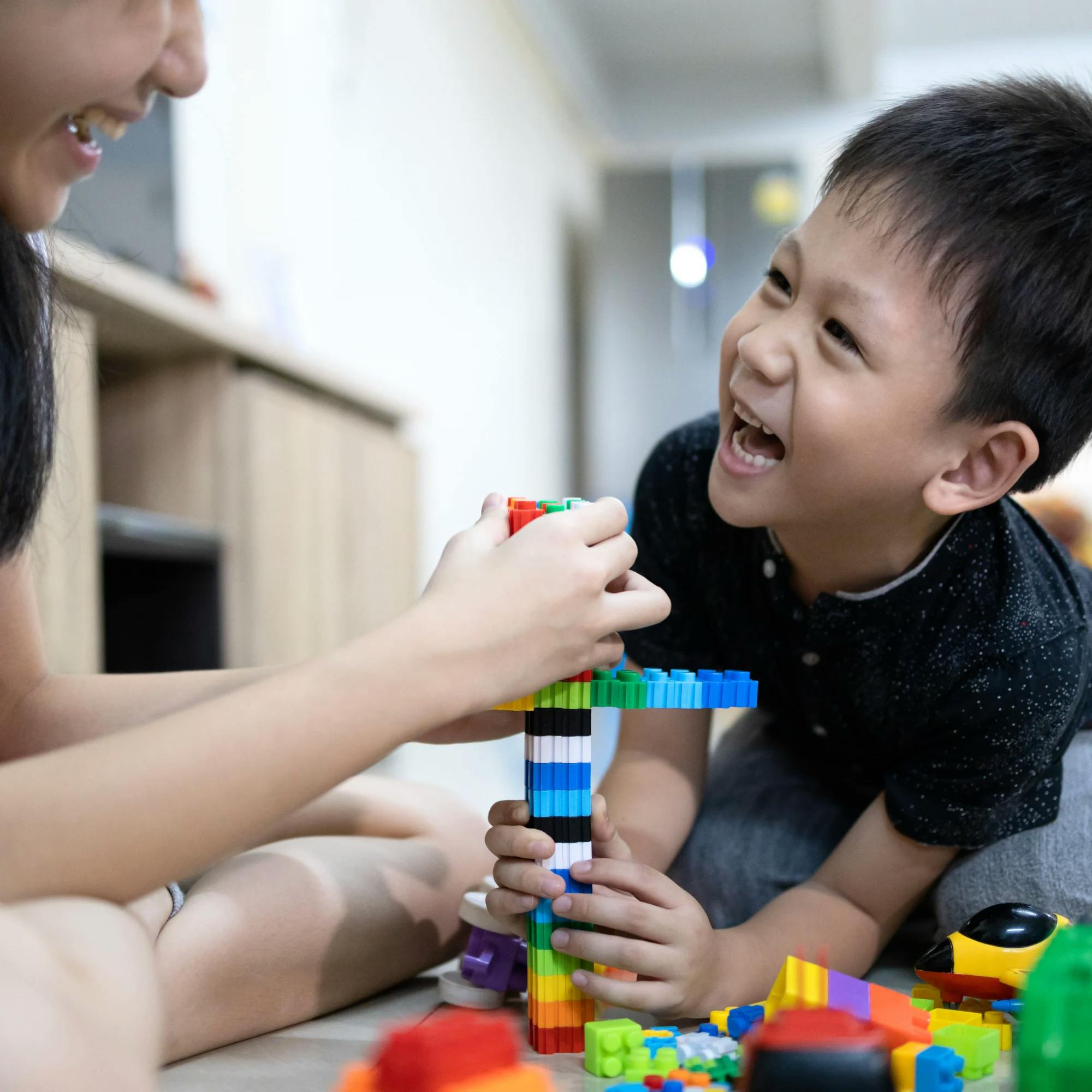If you, a loved one, or your child has apraxia of speech, you’re likely trying to learn more about this condition. Apraxia is not a disability, but it can come with communication challenges. Children with apraxia may need special support in school, and some people with apraxia may communicate in ways other than speaking.
Read on to learn what apraxia of speech is, how apraxia is treated, and what kinds of support children and adults with apraxia might need.
What is apraxia?
Apraxia is not a disability. Apraxia is a motor speech disorder that causes difficulty with verbal communication. Both children and adults who have apraxia will likely need support with communication. They may use different forms of communication other than speech. However, apraxia does not qualify as a disability.
What exactly is a motor speech disorder? To produce speech, the brain sends signals to the muscles in the mouth, guiding them to make accurate sounds with a certain speed and rhythm.
With apraxia, the brain knows what it wants to say, but it can’t plan the speech sound movements needed to say it.
Apraxia is a neurological condition that disrupts this process. In apraxia of speech, there is a disconnect between the brain’s signals and the person’s lip, tongue, and jaw movements. The person often has the language capacity to talk, but the signals from their brain to their mouth muscles are not sent correctly. In other words, the brain knows what it wants to say, but it can’t properly plan the speech sound movements needed to say it.
What does apraxia of speech sound like?
As a result of this neurological condition, people with apraxia have difficulty coordinating their mouth to turn sounds into syllables, syllables into words, and words into phrases. It is often hard for people with apraxia to form clear sounds and sentences. Most commonly, people with apraxia are described as “difficult to understand."
Some symptoms of apraxia of speech might include the following:
The person may pronounce the same word differently each time they say it. For example, one day they may say a difficult word correctly, but soon after they have trouble repeating it.
Sounds often come out incorrectly. Pronouncing vowels can be especially difficult, as can longer and more complex words.
People with apraxia can seem like they’re “groping” for words with their mouth. They may try saying a word several times before they say it correctly.
They may also struggle with the rhythm and flow of speech. They may segment syllables in a word, leave out syllables in words, or pause inappropriately while speaking.


How is apraxia of speech treated?
Speech therapy is extremely beneficial for both children and adults with apraxia.
One of the most important things a speech therapist will do before beginning therapy is to create an individualized treatment plan. The speech therapist will assess the types of sound errors they hear, and whether they occur at the single-word level or in connected speech.
Understanding the type and severity of errors present helps the speech therapist determine the goals to set. Goals are specific to each person, and they’re designed to be measurable so the therapist can track the client’s progress.
People with apraxia often need a lot of help, or cueing, to learn to produce new words. This cueing can be done in a variety of ways. It may include things like:
Visually showing the person how to produce each sound with the mouth. A therapist may use visual cue cards. Or they may say words at the same time as the person to help them even more.
Tactile cues can also be helpful. These can be prompts like touching the lips to remind the person to close their lips for the /m/ sound.
The therapist may also have the person listen to sound production and determine if it was correct or incorrect.
Over time, the goal is for the person to need less help from the speech therapist and become more independent with their speech productions. The speech therapist will monitor the person’s progress so they know when to dial back on the help they’re giving.


How often is speech therapy needed for apraxia?
Speech therapy for apraxia is all about learning new motor patterns and improving speech-motor coordination. Because of this, people with apraxia need frequent and consistent therapy in order to learn how to move their mouth muscles purposefully. That’s why the frequency of speech therapy sessions for apraxia is so important. For children, having at least three sessions a week is recommended in order to make appropriate progress. Adults with apraxia are also encouraged to attend therapy at least three times a week, if possible. Research supports more frequent, shorter sessions of therapy. Three sessions of 30 minutes or less are effective. Some speech-language pathologists may recommend five sessions per week at 15 minutes each.


Alternate forms of communication for people with apraxia
It’s important to note that just as individual symptoms of apraxia vary, so does progress. What works for one person with apraxia may not work for another. Each person progresses at their own pace.
Some children and adults with apraxia may need to find ways to express themselves other than speech. These alternative communication methods can include:
Sign language
Using a notebook with pictures or written words
Using an augmentative and alternative communication device, also known as an AAC device. Examples might include a communication board or a portable tablet that writes and produces speech.
In these cases, treatment focuses on helping the person learn to communicate using these systems. Although we typically think of communication as being verbal, it can come in many forms. And for someone who can’t communicate well with speech, these communication forms can open up a whole new world of possibilities!
Keep in mind that these assistive tools may not need to be used long-term. However, using these tools while working with a speech therapist can help promote speech production and verbal skills. Using AAC can also decrease feelings of frustration. Communication success breeds more success, and that’s often highly motivating for the person getting speech treatment.


Support and accommodations at school for children with apraxia
When it comes to advocating for your child, or speaking up on their behalf, there is no one more equipped for this job than you. You know your child better than anyone else! It helps to educate yourself on your child’s rights under special education law. Although childhood apraxia of speech is a disorder, not a disability, there are school-based resources available for children with communication difficulties: Individualized Education Plan/Program (IEP): This is a legal document in the United States that is developed for each child with special needs. The IEP is created by a team of teachers, specialists, therapists, and parents/guardians to document the goals of the child and how they will be completed in public school. An IEP might include special education services and accommodations, or changes to the child’s learning environment. 504 plan: Section 504 of the Rehabilitation Act of 1973 is a civil rights law that bans discrimination on the basis of disability. 504 was created to protect children with special needs. Under this law, schools must produce a formal plan for accommodating students with special needs, such as providing extra time on tests.
504 plans are different from IEPs because they are covered by different laws and work in different ways. The main goal is the same, however: to help students become successful in school.
You don’t have to be an expert in special education to advocate for your child (even if it sometimes feels like you’re becoming one!). However, reading about special education laws can help you understand what your child is entitled to. Apraxia Kids offers helpful information about this as well.


How much progress can someone with apraxia make?
Remember: There is effective treatment for apraxia! While speech therapists can’t determine exactly how much progress a person will make, speech therapy sets people up for the most success possible. Even if communication looks a little different for a while–less talking, more signing or using a communication device–that’s OK! There is no one “right” way to communicate. The goal is successful communication, no matter what that looks like.
How Expressable Can Help
Concerned your child isn't reaching age-expected milestones? Looking for communication support from a professional? Expressable is a national online speech therapy practice serving children and adults. We treat all major areas of communication and feeding, offer flexible hours including evenings and weekends, and accept most major health insurance plans. We’re proud to have earned more than 3,000 5-star reviews from our clients (4.9/5 average).
Our therapy model is centered on parent and caregiver involvement. Research proves that empowering caregivers to participate in their loved one’s therapy leads to better outcomes. That’s why we combine live, 1-on-1 speech therapy with personalized education and home practice activities for faster progress.
Communication is more than words. It’s how we share how we feel and show who we are. We’re here to help you or your child do just that.

 Abby Barnes, M.S., CCC-SLP
Abby Barnes, M.S., CCC-SLP










